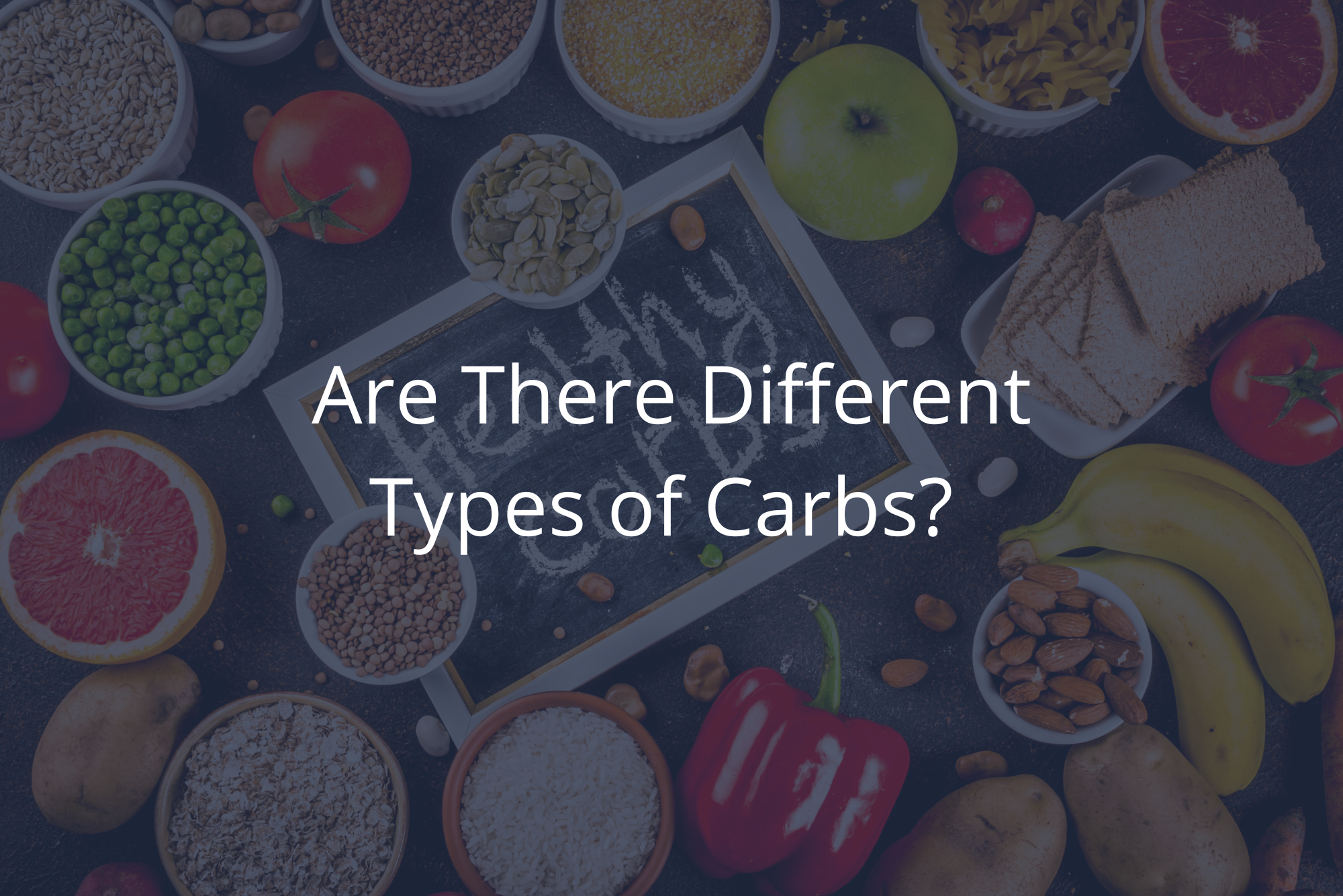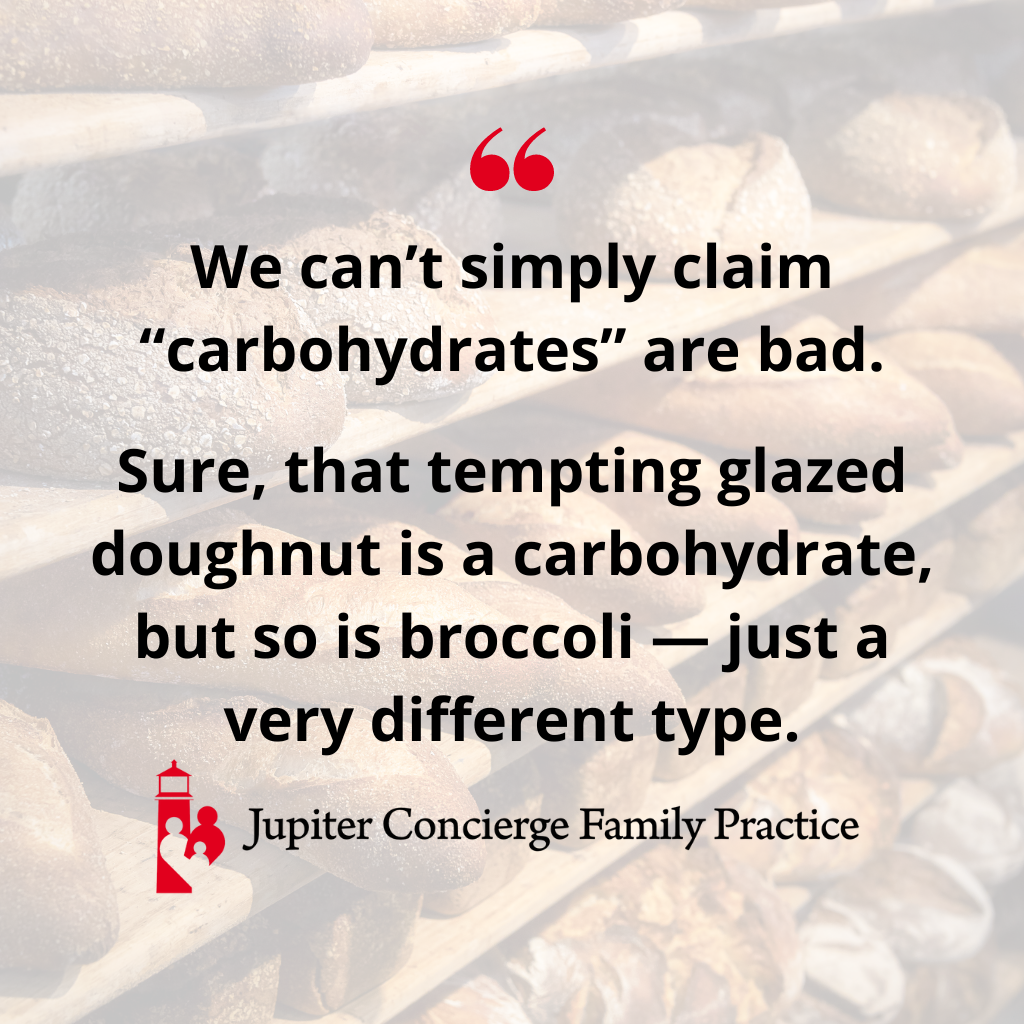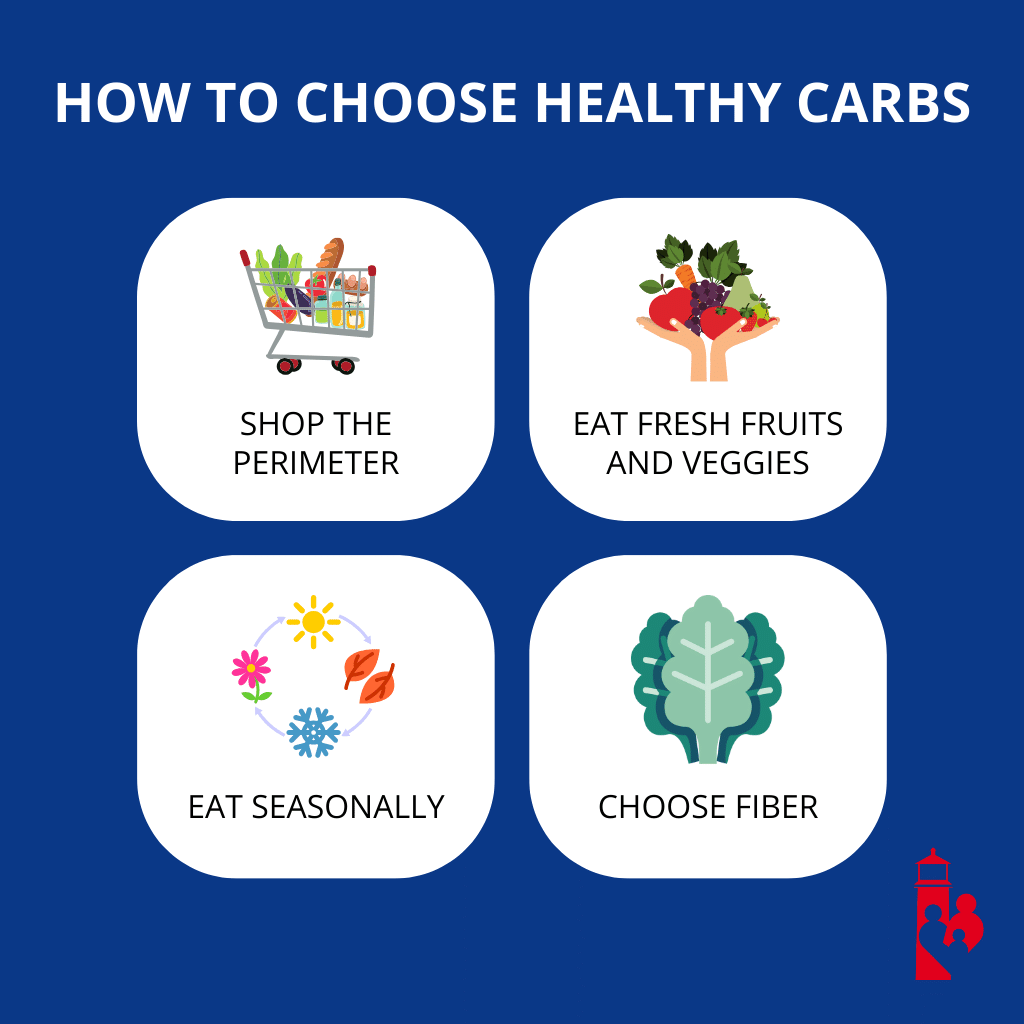 When it comes to vibrant health, one of the most important factors under our control is proper nutrition.
When it comes to vibrant health, one of the most important factors under our control is proper nutrition.
As one of the Four Pillars of Health, nutrition has long arms. I’ve written about its implications before here. And here. And also here.
One of the reasons I repeatedly talk about nutrition is because there are so many misconceptions wrapped up in it. One such misconception involves the oft-maligned carbohydrate.
When people think of carbs, they think two things: bread and bad. But the truth is far more complex than that. Carbs are a necessary food source. Our bodies need carbs, which provide an efficient energy source. Yet carbs have earned themselves a negative reputation among the diet-conscious.
What’s going on here?
In reality, there are different types of carbs, and that difference makes, well, all the difference. Let’s take a look.
What Are the Different Types of Carbs?
To start, let’s briefly examine food in its most basic components.
Food is composed of three macronutrients, each critical for human development and survival:
- Proteins — provide the basic building blocks of muscle, DNA, and enzymes
- Fats — important for hormone production, cellular membranes, and energy
- Carbohydrates — processed into glucose for energy (ATP/ADP) production
Next, there are three different types of carbohydrates: sugars, starches, and fiber. Note that the subtypes are not good and bad; we need them all.
- Sugars — simple versions of glucose, sugars are quick and easy sources of energy for your body. They occur naturally in foods like fruit and milk and are added artificially to many other foods, including but not limited to the obvious: cakes, candies, and syrups. They break down quickly in the body, resulting in insulin spikes (more on that later).
- Starches — more complex than sugars, starches take longer to break down for energy than sugars. However, processed starches (also known as refined starches) are less complex than whole starches and turn more quickly into sugars. (More on this later, too.)
- Fiber — a type of carbohydrate the body can’t digest. Though our bodies break down most carbohydrates into sugar molecules for energy, they can’t break down fiber. Instead, fiber passes through our body undigested, helping regulate hunger and blood sugar. When it reaches our gut, the helpful organisms of our microbiome then digest the fiber for us, producing necessary micronutrients for us as a byproduct.

Good and Bad: Why We Cut Carbs
So, why the bad rap? If we need them, why do people think of carbs as bread and bad? For this misunderstanding about carbs, I’ll point primarily to the rise and continued popularity of low-carb diets.
Since about 1860, restructuring carbohydrate intake has been a popular way of losing weight in the U.S., a place where undesired weight gain has become a widespread issue. While the approaches and branding differ moderately — Keto, Paleo, Atkins, South Beach — these diets all aim to reduce carb intake (which often equates, at minimum, to a blockade on bread).
Why? Not because carbs are evil, but because carbs are efficient. When our bodies need energy, they reach for carbs first (especially those easy-to-convert sugars). When we withhold carbs, however, our bodies have no choice but to reach for their second-choice fuel — fat. Thus, low-carb diets force our bodies to burn excess fat, resulting in weight loss.
On the flip side, low-carb diets belong to what I call the therapeutic diet category. They eliminate or severely reduce a normal macronutrient to accomplish a therapeutic purpose — weight loss. Like most other therapies, however, these diets aren’t meant to last forever, and they can have negative consequences if we try to make them. For instance, burning mainly fat for energy produces byproducts in the body, some of which are unhealthy over time.
So when people go on low-carb diets, they think I need to minimize my carbs, when they really need to minimize their (bad, unhealthy) processed carbs and focus on (good, healthy) whole carbs. Let’s examine that further.
Whole vs. Processed Carbs
Rather than classifying one entire subtype of carbs — say, sugars — as bad, I recommend a different approach. All three types of carbohydrates can be good and healthful for us if we simply eat them in their whole, unprocessed forms.
Fresh fruits and vegetables are excellent examples of whole carbohydrates. They deliver a host of vitamins and minerals necessary to our health, and they’re rich in fiber. Vegetables contain minimal sugar, so unless your gut is sensitive to vegetables, you can likely eat them with impunity.
We need to exercise a little more restraint with fruit consumption, since these contain far more sugar than vegetables. However, whole fruits also contain fiber, which slows down our bodies’ sugar absorption and mitigates the resulting insulin response. For this reason, two servings of whole fruit per day is perfectly healthy for most people.
Notice the emphasis on the word whole. Whole carbohydrates contain fiber because it hasn’t been processed out of them. The unfortunate reality is that processing removes the naturally occurring fiber (not to mention vitamins and minerals) from foods.
Consequently, processed carbs don’t contain fiber. Let’s imagine a loaf of white sandwich bread versus a whole-grain loaf. The grain (wheat, in this case) in the white bread has been processed into a simpler starch. It still contains some vitamins and proteins, but the most nutritious parts — including the fiber — are removed. The result? A less nutritious product that converts quickly into sugar and spikes your insulin.
In contrast, the whole-grain loaf was not refined, so it retains the fiber, vitamins, phytochemicals, and healthy fats lacking in the white bread. For a handy visual, check this out.
To compensate for the loss of nutrients, manufacturers must reintroduce vitamins, minerals, and fiber artificially after processing, along with a few extra ingredients (preservatives) to extend shelf life. Highly processed foods — which look something like Play-Doh in their unfinished form — even require shaping and coloring to appear remotely palatable on your plate.
Finding Healthy Carbs
Unhealthy, processed carbohydrates are everywhere, causing insulin spikes and delivering heaps of preservatives with carcinogenic potential. Incredibly, 60–70% of groceries today are processed foods.
While that sounds like a lot (because it is!), the good news is processed foods are easy to identify and — consequently — avoid. If it comes in a box, has an ingredient list, and/or resides in the store’s central aisles, it’s processed.
So what can we do about it? These easy tips will help you stay on track with your grocery store choices:
- Shop the perimeter. You’re most likely to find whole items around the perimeter of the grocery store, where the fruits, veggies, meats, dairy, and eggs live.
- Eat fresh fruits and vegetables. As soon as they’re picked, fruits and vegetables start to lose their nutritional value, so it’s best to eat them fresh.
- Eat seasonally. Cross-country or intercontinental treks aren’t unusual for produce in today’s world. To ensure optimal freshness (and genuinely ripe produce), opt for what’s in season in your region.
- Choose fiber. The more fiber a carbohydrate contains, the healthier it is. Consume high-fiber carbohydrates like whole grains, fresh fruits and vegetables, legumes, nuts, and beans.

Different Types of Carbs: Concluding Thoughts
We can’t simply claim “carbohydrates” are bad. Sure, that tempting glazed doughnut is a carbohydrate, but so is broccoli — just a very different type.
When we recognize that there are different types of carbs, and that carbs come in both whole and processed forms, we can steer our diets toward minimally processed, whole-grain, fiber-rich options. Instead of vilifying one-third of all macronutrients, we’re able to successfully navigate the carbohydrate conundrum and provide our bodies with the nutrition they need.

Dr. David Rosenberg
Dr. Rosenberg is a board-certified Family Physician who obtained a BS in Chemistry at Georgia's Mercer University in 1983 and a medical degree from the University of Miami in 1988. He completed his residency in Family Medicine at The Washington Hospital in Washington, Pennsylvania, in 1991 and then practiced Emergency Medicine at Palm Beach Gardens Medical Center for two years. In 1993 he started private practice in Jupiter.
Dr. Rosenberg has been married to his wife Mary for 38 years and they have three grown children together. Some of his interests include being a huge baseball fan, sailing, snow skiing, self-development, and learning to play piano.
